The Chess Journey of GM Maurice Ashley
I met Maurice Ashley nearly 30 years ago at the 1989 U.S. Open held just outside of Chicago at the Rosemont Hyatt. At this time, I had already started the groundwork for a chess network for players of African descent. During a graduate-level marketing class, I was able to write a marketing plan for the idea. The plan would include a quarterly magazine with an international circulation.
.jpg)
Maurice Ashley in 1000 words
Honestly, I knew nothing of Maurice at the time since I played practically all of my tournament chess in Illinois. The exceptions were once in New York for the Pan-Am Intercollegiate and once in Las Vegas for the National Open. Nevertheless, I saw this young man playing on the top 20 boards round after round. He walked with an air of confidence and seemed to possess boundless energy.
Meetings of the Minds
One day he was wearing a t-shirt with a “Jamaica” design. Somewhere along the way, I casually introduced myself. After that, we struck up a friendly conversation during which I said, “You’ve obviously been to Jamaica.” He explained he was born there. It became clear that we shared similar interests outside of chess including professional sports and reggae music. The next day, I brought a “boom box” and blared Steel Pulse’s Earth Crisis album in the skittles room. He loved it!
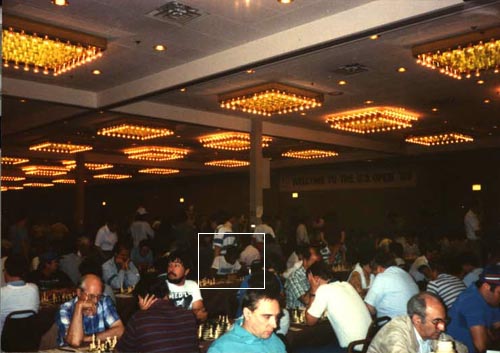
In action at 1989 U.S. Open!
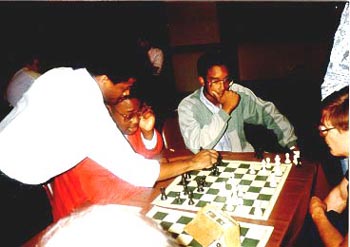
FM Maurice Ashley analyzing with R.O. Mitchell (and his seated opponent) at the 1989 U.S. Open at the Rosemont Hyatt near Chicago. Kimani Stancil, then the Maryland High School Champion, looks on. Next year, Mitchell would win the 1990 U.S. Junior Open and earn his National Master’s title. He passed away in 2007. Stancil went on to earn his Ph.D. in Physics from MIT in 2002. Photos by Daaim Shabazz.
As if by design, I would spend the next summer in New York interning at Time Warner’s Sports Illustrated on Avenue of Americas. I reached out to Maurice. The conversations were lively and cordial as we continued to share our dreams and ambitions as far as chess was concerned. There may have been a fair amount of Chicago Bulls – New York Knicks trash-talking as well!
We met at Washington Square Park and I shared with him the aforementioned marketing plan. He immediately gave his support. That plan would later become The Chess Drum. It would appear that our initial meeting in Chicago was not a coincidence. Both of us would serve complementary roles in expressing our own passions for chess.
Coming to America… a Dose of Reality
Maurice’s mother immigrated to the U.S. to chart a better path for her children. It’s not easy to be away from your own children for even a short amount of time. After ten years in the care of their grandmother, Maurice and his siblings (Devon and Alicia) left St. Andrew, Jamaica and landed in New York to be reunited with their mother. Years later, Maurice would later admit the difficulty of the 10-year separation.
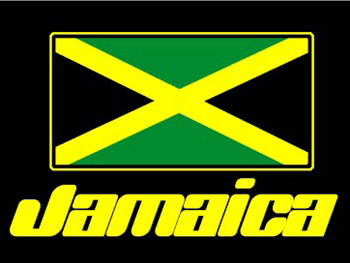
The first years of adjustment were challenging as young Maurice had naive ideas about life in America. He soon discovered that Brownsville section of Brooklyn was no joke! In a city of sport-crazed fans, where would Maurice express his talents? Basketball? Boxing? Track? Soccer? No… it would be chess!
How did this 12-year old kid from Wolmer Boys School in Jamaica find his niche in an unlikely game? He previously learned the moves from his brother while in Jamaica, but took no active interest. When he got to Brooklyn Tech High School, he rekindled his interest in the game.
It didn’t go well in the beginning.
.jpg)
Maurice (right) with family members in Brooklyn, New York
Maurice’s confidence as a supreme game enthusiast got the best of him, and he was soundly defeated by a classmate. It would be a pivotal moment in his life. The chess neophyte was licking his wounds from the beating when he stumbled upon a book on chess. This book included the feats of Paul Morphy, an American legend. He was hooked.
A few years later, he started visiting the parks in Brooklyn where he met the likes of Willie “Pop” Johnson, Ron Simpson, Chris Welcome, Ernest “Steve” Colding. The men would serve as role models and would be important to Maurice’s developmental process in chess. Incidentally, he would make mention of this group in his Hall of Fame speech. They were all members of the famed chess fraternity called “The Black Bear School of Chess.”
The Black Bear School of Chess
The Black Bear School was an incubator for chess players that included 30-game blood matches and intense analysis sessions on specific openings. Also a member was William “The Exterminator” Morrison who had bruising battles with Maurice and would later reach 2500 rating.
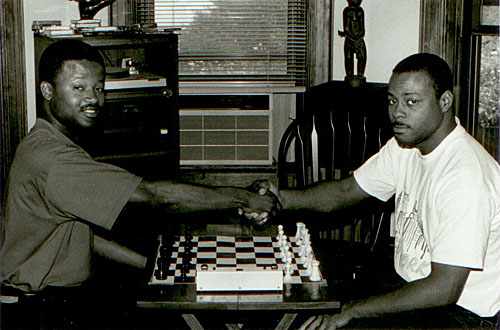
Maurice Ashley and William Morrison. . . the #1 and #2 ‘Black Bears’.
Photo courtesy of Jerry Bibuld
These were crucial years for Maurice. In a chat with the broadcast on The Moth, he recounted his 1985 encounter with George “Firebreather” Golden. It was a “David vs. Goliath” battle of a young understudy taking on the patriarch of the school. It would be cliche to describe it as a scene from the movie, The Karate Kid, but the metaphors are similar.
Maurice described this encounter with the Firebreather as one of the most important measuring sticks of progress. Not only did this encounter give him the confidence, but it would set in motion the mentorship that is so badly needed to create chess excellence. The road to the top of the Black Bear food chain prepared Maurice for the big stage.
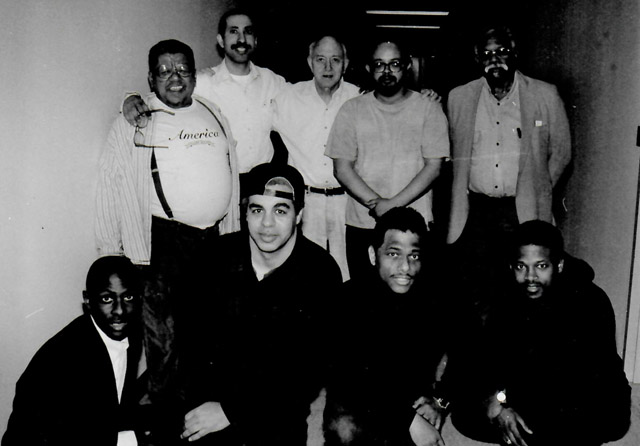
Kingsman Chess Club
Kneeling (L-R): Jerald Times, Ernest Colding, Ronald Simpson, Maurice Ashley
Standing (L-R): Robert Ali, David Diamond, Jerry Bibuld, Herminio Baez, John Evans
Photo courtesy of Jerry Bibuld
It was in the late 80s and early 90s that Maurice had begun to show that his hard work was paying off. Both Maurice and Emory Tate would earn IM norms at the 1988 New York Open and five years later would meet in a bruising battle at the same tournament. More on that later. While Maurice was charting a course, he had to build a foundation from which to prosper.
Coach Ashley
By the recommendation of Gisela Gresser (9-time national women’s champion), he started coaching in the Manhattan Public School System at Mahalia Jackson (PS 123). The impact was immediate. The story goes that the team went to Arizona and brought back seven trophies. They received publicity from New York Post, New York Times, CNN and USA Today.
While returning from the championship, they proudly carried their trophies through the airport. A man came up and asked what the trophies were for. When told they were for chess, he seemed shocked. His wife walked up and asked if the trophies were for basketball. Realizing the implication, the husband interjected, “No. They’re for CHESS!” As often as these situations occur in America, this may have been a catalyst in further breaking media stereotypes.
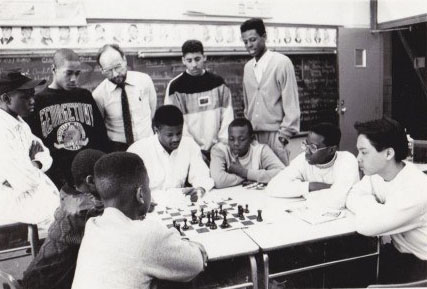
“When I started, there weren’t a lot of good black chess players, so there wasn’t a high ceiling for me to shoot for,” he said. “Now I’m the ceiling for these kids, and I’m hoping they’ll surpass me. I want them to become role models. Their victory already makes a major statement about the potential of kids in the inner city — and about the lost potential of those adults you see on street corners.”
~Maurice Ashley in New York Times interview, April 26, 1991
He began coaching the “Raging Rooks,” from Adam Clayton Powell Junior High School in the historic district of Harlem. In 1991, they traveled to the National Junior High School Championships in Dearborn, Michigan where they won the national title. Eventually, Coach Ashley would lead the Rooks to two state championships and the one national championship. The story made the front page of the New York Times and was titled, “Harlem Teen-Agers Checkmate a Stereotype.”
Trodding a Stony Road
By 1993, Maurice had earned his International Master title and had his sights set on the Grandmaster title. After leading the Mott Hall Dark Knights to three national championships, he decided to take a break from coaching to focus on his ultimate goal. In that year, he matched wits with the attacking impresario Emory Tate. This game is annotated for the Tate biography Triple Exclam by fellow Black Bear, William Morrison.
In the same year, Maurice elevated his broadcasting profile by providing commentary for the 1993 Kasparov-Short championship match at the World Trade Center. Four years later, he would also call the famous Kasparov-Deep Blue match. While both were epic events, the parallel championship was a historic event for so many reasons.
Firstly, the match was in the aftermath of Garry Kasparov’s breakaway from FIDE and disrupting the long line of World Champions. Secondly, it was a match designed to capture the public’s attention with two dynamic commentators, Maurice Ashley and British GM Daniel King. Finally, the World Trade Center would enter the history books in infamy after the attacks on September 11, 2001.
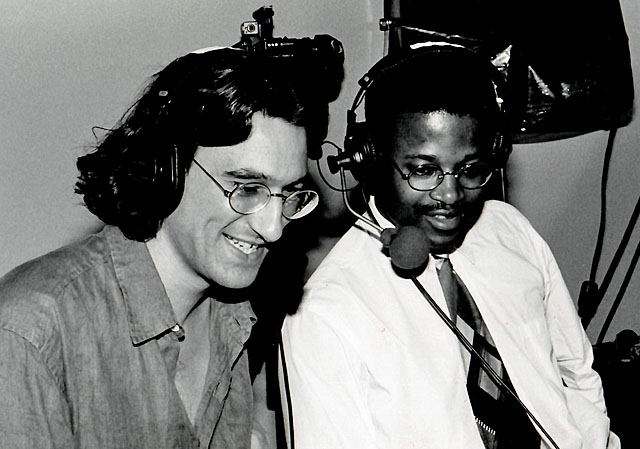
GM Daniel King and IM Maurice Ashley calling the PCA Grand Prix in 1994
Photo courtesy of Jerry Bibuld
There was a question circulating on who would become the first Black Grandmaster. It was merely a conversation piece and not one to be taken too seriously. Besides Maurice, there were a few names bandied about including Emory Tate and Watu Kobese of South Africa. The fact that such a conversation could be had was a testament that Black chess had born the fruits of the “Fischer Boom” and the 80s saw a wave of activity in the African Diaspora.
One could imagine how difficult it was to stay on the GM path, but Maurice stayed busy. From 1991 to 1997, he was the chess director of the Harlem Educational Activities Fund (HEAF), an organization that provided supplemental youth programs for academic and social enrichment. This would also be the organization that would host the historic Wilbert Paige Memorial in 2001.
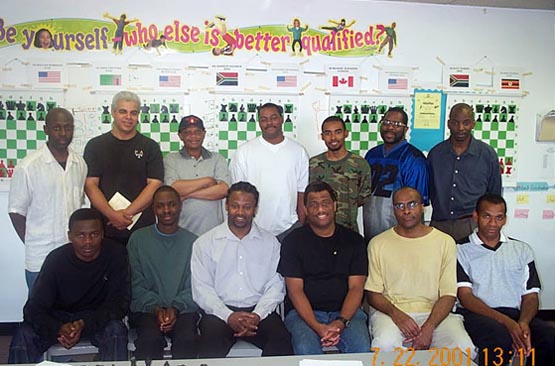
2001 Wilbert Paige Memorial held at HEAF (Harlem, New York)
Seated (L-R) IM Amon Simutowe (now GM), NM Grace Nsubuga, GM Maurice Ashley (commentator), FM Ronald Simpson, IM Michael Schleifer, FM Stephen Muhammad (now IM). Standing (L-R) NM Jerald Times (commentator), NM Ernest Colding, IM Watu Kobese, FM William Morrison, FM Kenny Solomon (now GM), FM Norman Rogers, NM Elvin Wilson (commentator). Photo by Daaim Shabazz.
In addition to his duties with HEAF, the gargantuan task of earning the GM title took him from coast-to-coast in the U.S., St. Martin, Bermuda, Hungary, Germany and France. Of course, it helped that he was located in the chess magnet of New York. The New York and World Opens were accessible and the strongest tournaments the U.S. had to offer.
Maurice was paying his dues. With few resources, limited norm opportunities, a bit of generosity, and a lot of determination, he charged ahead with a plan. Having celebrated his 33rd birthday during the tournament, he had a slow start. After a couple of nice wins, he picked up steam and clinched the GM norm with a round to spare. Below is his norm-clinching victory against IM Adrian Negulescu. The game appeared in the March 29, 1999 issue of the Washington Post newspaper and notes provided by GM Lubomir Kavalek.
A GM at a Crossroads
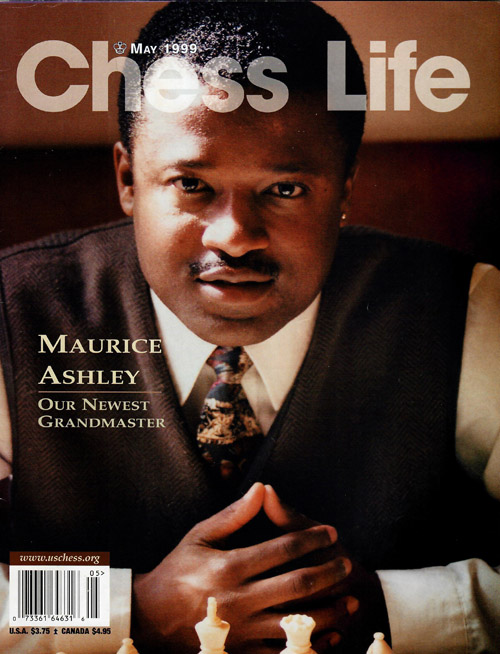 The cover story of the May 1999 issue of Chess Life changed the face of American chess, literally. There had been other Black masters on the cover of Chess Life including Walter Harris, Frank Street and, Kenneth Clayton, but Maurice Ashley’s name would forever be etched in the annals of chess history earning the sport’s highest title!
The cover story of the May 1999 issue of Chess Life changed the face of American chess, literally. There had been other Black masters on the cover of Chess Life including Walter Harris, Frank Street and, Kenneth Clayton, but Maurice Ashley’s name would forever be etched in the annals of chess history earning the sport’s highest title!
Maurice was awarded the title of International Grandmaster by the World Chess Federation (FIDE). While he completed the requirements 20 years ago in 1999, the title was conferred in 2000. There was a big celebration within the African Diaspora and the question of the “first” had finally been answered!
He earned his first two GM norms at the 1993 Enhance International at the Marshall Chess Club and then the 1997 Bad Wiessee Open in Germany. It seemed appropriate that he earned his last norm at the 1999 Manhattan Invitational since it was not far from where his dream started. The story doesn’t end with the GM title. In fact, it was just beginning.
After earning the GM title, he continued as a professional player even winning back-to-back Foxwoods Open tournaments. Despite this success, he came to a realization expressed in an interview:
The reality for a person like me is if you never make it to the top 20 in the world, there are very limited ways to make money in chess. Teaching is the most consistent because people want to get coached by a grandmaster. That’s nice money. Writing books, doing lectures, doing appearances. I do live commentary online for tournaments around the world. So a grandmaster has to cobble together all that stuff. Otherwise you’ll starve. You can’t make a living only if you play. (link)
Maurice tried his hand in a number of projects including his popular chess software, Maurice Ashley Teaches Chess. We were entering a new era of computer chess software and this CD was an early generation release running on Windows 95. It featured Maurice’s trademark John Madden-style commentary.
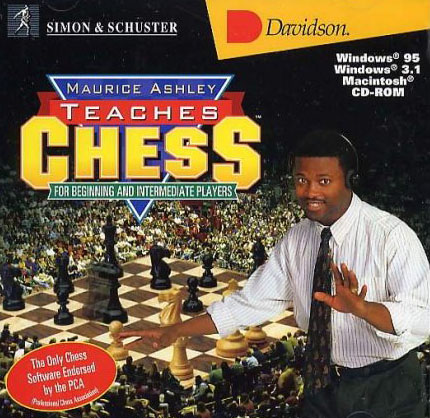
Besides the popular CD, he also authored several books along the way and tried his hand organizing his first major event. In 2005, he would organizer the “HB Global Chess Challenge,” with a $500,000 prize fund. This was unprecedented at the time. Nine years later, he would launch a series of “Millionaire Chess Open” tournaments with a $1,000,000 prize fund (2014, 2015, 2016). The series failed to break through and was scuttled after the third edition. However, it created a fierce debate about high stakes chess.
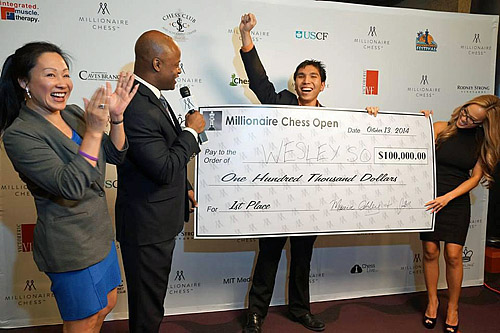
Amy Lee and Maurice Ashley present a triumphant Wesley So
with the winner’s check at 2014 Millionaire Open.
Photo by Paul Truong.
All of these feats were admirable, but where Maurice seemed to find his niche was in the area of chess commentary. Bringing all of his various chess experiences together has created a type of passion that has rarely been seen. In the following clip, he discussed chess’ potential as a spectator sport, a notion that the chess community has grappled with since the Bobby Fischer era.
From Jamaica to Brooklyn to the Hall of Fame
Maurice has put together a stellar career. Perhaps a crowning achievement was his 2016 induction into the U.S. Chess Hall of Fame. This was the culmination of his contributions as a player, coach, author, speaker, commentator, and organizer. It was a long journey for the Maurice, who spent his teen years in the hardscrabble parks of Brooklyn playing pickup chess, a cub among a group of fierce lions.
Having cobbled together a portfolio of projects, the Jamaican-born, Brooklynite has slowly become one of the most visible faces in the chess world. This includes forays into popular culture recently appeared on the popular Trevor Noah Show…
…the TV series “Billions”…
…and who could forget the video that went viral!
If you look at Maurice Ashley’s career, he is one of the few who can say he has been involved in every facet of chess. There is only one area that he has avoided. Maurice has hinted that he does not like the taste of chess politics, but he was one of the advocates for fair play and ending the pattern of quick draw offers in tournament play. He penned an article titled, “The End of the Draw Offer?”
The idea of limiting draw offers has become a fixture in many high-level tournaments, and one method has been dubbed the “Sofia Rules.” Other events have implemented various versions to promote the idea of fighting chess. If chess is to be presented as a marketable sporting activity, it will have to find a formula.
One can say that Maurice Ashley has at least tried to find the formula. As a Grandmaster, he has recognized his role as an ambassador of chess, and 20 years later he continues to pay it forward. Well done Maurice!
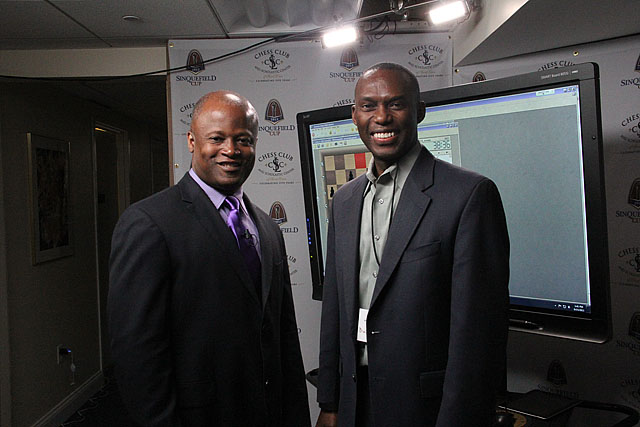
At the inaugural Sinquefield Cup
at the St. Louis Chess Club in 2013
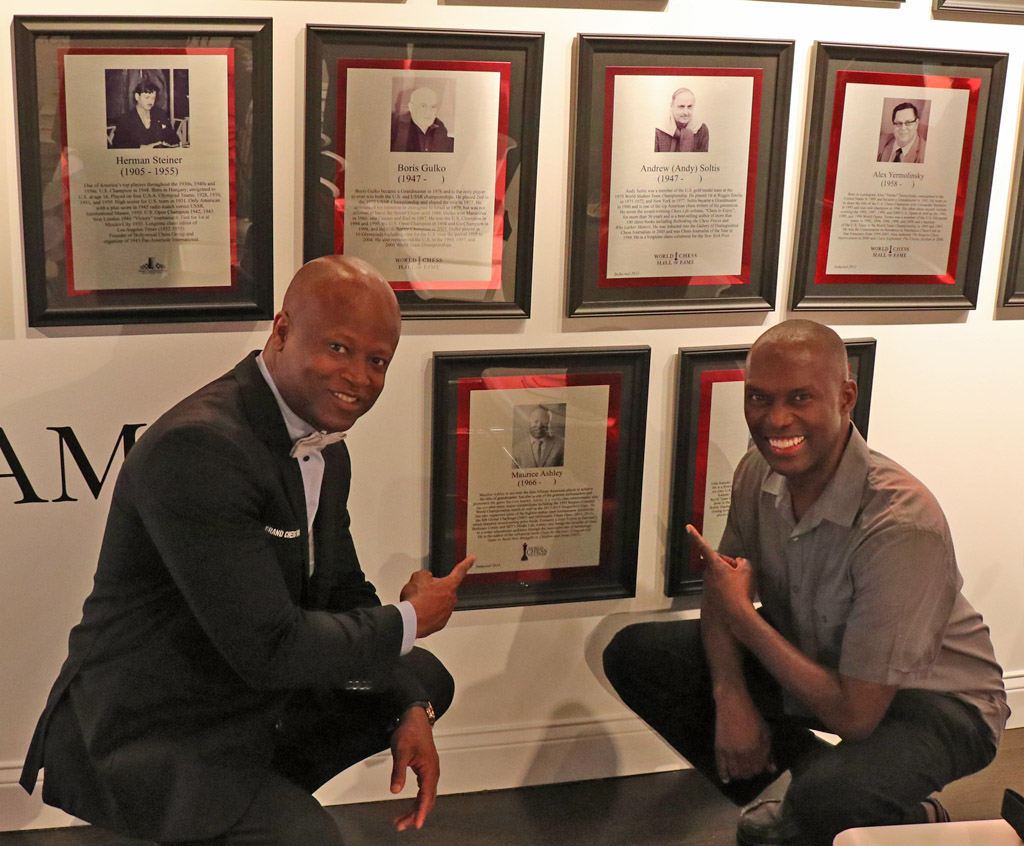
Posing with Maurice at his Hall of Fame plaque
at the World Chess Hall of Fame in St. Louis
Photo by Daaim Shabazz

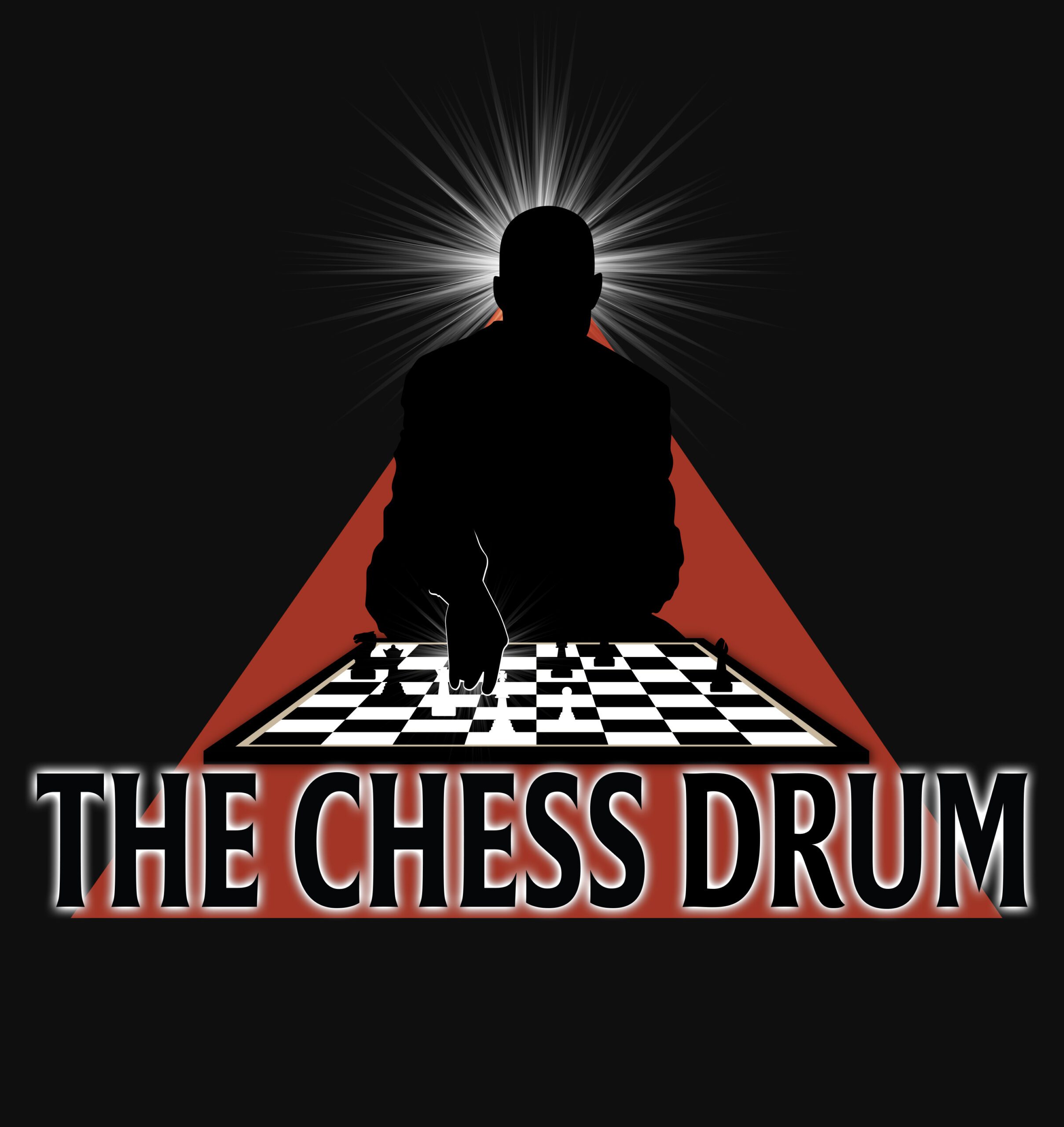
Maurice Ashley and Daniel King
(1995 World Chess Championship, Game 9)
Excellent stuff Daaim. Always fascinating to read about Maurice’s scintillating, stupendous sojourn. May there be greater things ahead for my fellow Jamaican.
Indeed! Wish you could be in Cote d’Ivoire with us or we could be in Jamaica for the 50th! Congratulations on the milestone!
Video by Daaim Shabazz/The Chess Drum